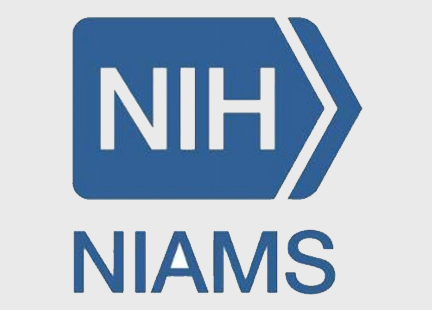
Spotlight on Research 2012
April 2012 (historical)
Research Findings Challenge the Current Understanding of Cell Development Processes
Investigators within the intramural research program of the NIH’s National Institute of Arthritis and Musculoskeletal and Skin Diseases (NIAMS) have recently shed light on the roles of two proteins that are critical to cell development, and, in so doing, could alter the way scientists approach regenerative medicine, tissue engineering and the treatment of cancer.
Undifferentiated cells are those that lack a specific structure or function. These cells will specialize and form particular tissue based on which genetic signals they are exposed to during their development. Two proteins, Ezh1 and Ezh2, are known to regulate these genetic signals.
Ever since their discovery in 1997, Ezh1 and Ezh2 have been thought to suppress, or filter out particular genes during a cell’s life cycle. By suppressing certain genes, it was believed that Ezh1 and Ezh2 controlled which genetic signals a developing cell was exposed to, thereby guiding the maturation of these cells. While Ezh2 is active during the undifferentiated stage of a cell’s life, Ezh1 was assumed to switch on once the cell had differentiated.
However, in a paper published in the journal Molecular Cell, Vittorio Sartorelli, M.D., and his team in the NIAMS Laboratory of Muscle Stem Cells and Gene Regulation have shown that Ezh1 guides cell development through promotion rather than suppression. Once a cell has differentiated, rather than continuing the gene filtering process of Ezh2, Ezh1 activates, or promotes, those genes that assist in the cell’s development.
Currently, there is interest in developing drugs that target Ezh2 to treat tumor growth in cancer. Since Ezh1 and Ezh2 are structurally similar, an intervention aimed at one could affect the other. This approach would have been inconsequential prior to Dr. Sartorelli’s discovery, since both proteins were thought to play the same role in cell development. Now, however, the two proteins’ differing method of action suggests the need for greater specificity in treatment. Additionally, this enhanced mapping of the processes involved in cell development may benefit emerging fields, such as regenerative medicine and tissue engineering, that are based on understanding the maturation and differentiation of cells.
The mission of the National Institute of Arthritis and Musculoskeletal and Skin Diseases (NIAMS), a part of the U.S. Department of Health and Human Services’ National Institutes of Health (NIH), is to support research into the causes, treatment, and prevention of arthritis and musculoskeletal and skin diseases; the training of basic and clinical scientists to carry out this research; and the dissemination of information on research progress in these diseases. For more information about the NIAMS, call the information clearinghouse at (301) 495-4484 or (877) 22-NIAMS (free call) or visit the NIAMS website at https://www.niams.nih.gov.
###
Mousavi K, Zare H, Wang AH, Sartorelli V. Polycomb protein Ezh1 promotes RNA polymerase II elongation. Mol Cell. 2011 Dec 20. [Epub ahead of print] PMID: 22196887
